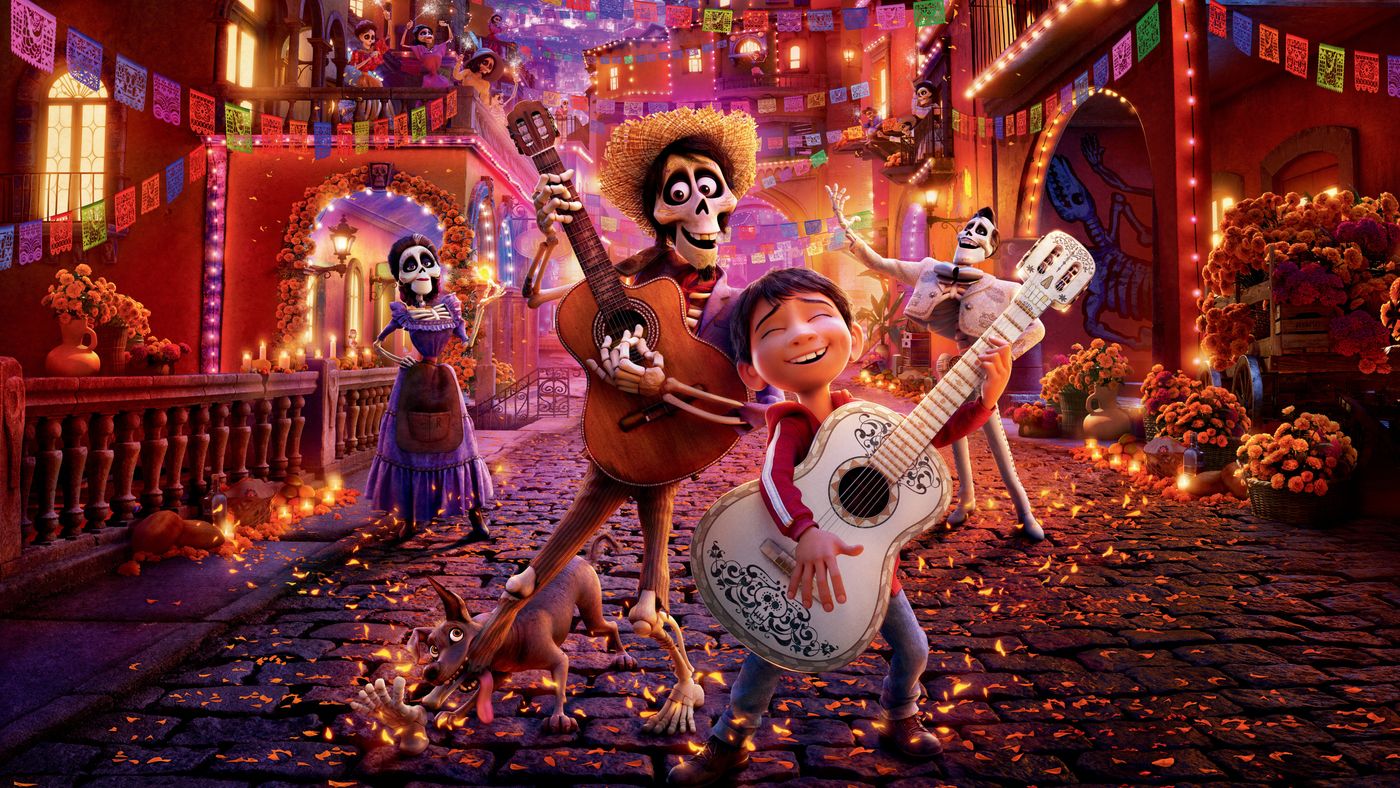
Taiwanese 電影 | 追劇 | 音樂 | 旅行 | 足球 | 語言 | Murmur
Experience | Coco Nightclub / Coco / Dream Travel (2017)

The art setting of this movie is super gorgeous and gorgeous, and it vividly presents the prosperity of the nightclub. It is the most visually favorite Pixar animation I have ever seen. The title of "Coco Nightclub" is really amazing! The screenwriter went to Mexico to do a lot of inspections, and the pictures feel really Mexican style. Many names in the film also have their basis, and the character creation also refers to many characters in the real world, which are highly affirmed. .
I read the English version mixed with a little bit of Spanish. I felt it was very necessary to read the full Spanish version. The opening and closing of the film are all in Spanish imperative (egg pain). After reading it, I also really want to watch all the masterpieces played by Hector's voice actor Gael García Bernal (I want to read the motorcycle diary on the eve of the revolution for a long time).
Some of the songs in the film are great, and the lyrics are very touching. My Spanish teacher once briefly introduced Latin America's Day of the Dead and the famous female ghost "La Llorona" (one of the songs in the film) in class. Llorona is a famous female ghost in Mexican urban legends, wandering around the world calling Niño/a to find her child. If a child hears Llorona's call, it will be unfortunate. Adults will use this to deter children from running out of the house at night, probably It is the Latin American version of the concept of Aunt Tiger.
In fact, the Day of the Dead is a bit like a combination of our Qingming Festival + Mid-Autumn Festival or even the Mid-Autumn Festival. Latin Americans attach great importance to the connection between family members and family members. The concept of life and death presented in the film is very interesting. The dead can come out every year during the Day of the Dead. Yangjian visits relatives, while the living place their photos on the altar, and enshrine the deceased’s favorite food and items (similar to Zhongyuan Purdue). "Exiting the country" also requires "swiping your face" to clear customs. You must have someone in the world enshrined your photo before you can get out. If you were a marginal person during your lifetime, you can only be a marginalized ghost at the bottom of the society after death (the film says that a person's first death is physical, the second death is when no one on earth remembers you anymore, the soul is gone forever). In addition, pets during their lifetime will turn into spirit beasts and continue to guard their owners in the underworld. In their culture, animals are spirit guides, and they can travel freely between Yin and Yang. In short, I think the story setting is very cute, and the family love in it is also very sincere and touching.
Personally, I think that in contrast, the Chinese world is still more reverent and shy of ghosts and gods. The Chinese seem to emphasize family connection, but the emphasis is more on the formal level (such as blood inheritance and the like).
Further reading
- Lessons | Control (2007) | Ian Curtis's Elegy of Youth
- A tearful animation | Your name Your Name 君の名は. (2016)
- Experience | God's Own Country (2017)
- Explore parent-child relationships from the movie "Lady Bird" and the TV series "Your Children Are Not Your Children"
- Experience | The Theory of Everything (2014)
- Experience | My kangaroo roommate The kangaroo Chronicles | Smuggling Berlin travel photos
- [Thai Movie] Crazy Little Thing Called Love
- 【National Film】Listen before you sing
- [Spanish Movie] My Big Spanish Wedding (2013) | Family Comedy | Family United | La gran familia Española
Matt City Article Index
also follow me in these places
- Liker.Social
- Blogger (Europe, Asia, domestic and foreign travel journals)
- Youtube - The Beat Goes On music sharing, concert meal shots
- Youtube - Cherrycola travel, life, VLOG
Like my work?
Don't forget to support or like, so I know you are with me..
Comment…